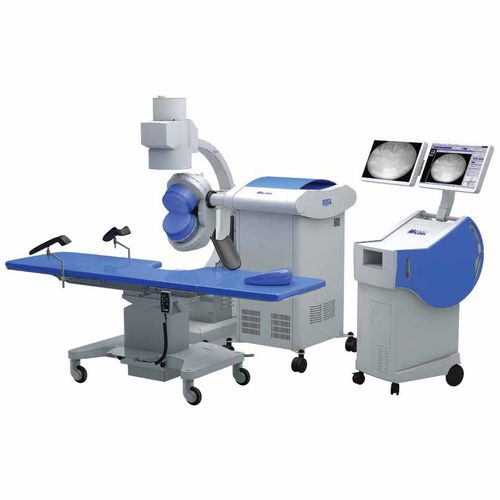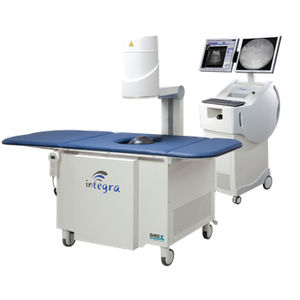
Extracorporeal lithotripter Duet Magnatrolley-mountedwith C-armwith lithotripsy table

Add to favorites
Compare this product
Characteristics
- Type
- extracorporeal
- Ergonomics
- trolley-mounted
- System features
- with C-arm, with lithotripsy table
Description
Electromagnetic DSWL
Double Shockwave Lithotripsy
Duet Magna introduces the combination of electromagnetic technology and the double shockwave concept, allowing for some clear and unique advantages in the field of shockwave lithotripsy.
Reducing Kidney Damage
An Indiana University study on Double Shockwave Lithotripsy (performed on the Duet Magna's predecessor device) showed a 5-fold reduction in kidney damage*. "The lesion produced by 2400 SWs (1200 SWs/head, power lever 10) at120 SWs/min in alternating mode was quite low (0.22 ±0.09% FRV) and compares favorably with the lesion (1.08 ±0.38% FRV) produced by 2400 SWs delivered with the HM3 Lithotripter at 120 SWs/min (23kV)…" *Handa et al. Journal of Urology, February 2009
The Butterfly Focal Area
The Duet Magna is equipped with two reflectors and performs Double Shockwave Lithotripsy (DSWL) from these two sources.
DSWL results in the formation of a unique Butterfly Focal Area that concentrates pressure to the stone from two different angles, and spreads the "head and tail" of the shock wave volume to reduce the risk of kidney damage.
In fact, the Duet Magna roughly converts the focal volume to a sphere, which is considered the ideal focal volume for lithotripsy. The Butterfly Focal Area is superior to the conventional ellipsoid, or "cigar", that only utilizes the central section of the focal area. This renders the "head and tail" of the focal area useless in terms of stone disintegration and only contributes to kidney damage.
VIDEO
*Prices are pre-tax. They exclude delivery charges and customs duties and do not include additional charges for installation or activation options. Prices are indicative only and may vary by country, with changes to the cost of raw materials and exchange rates.


